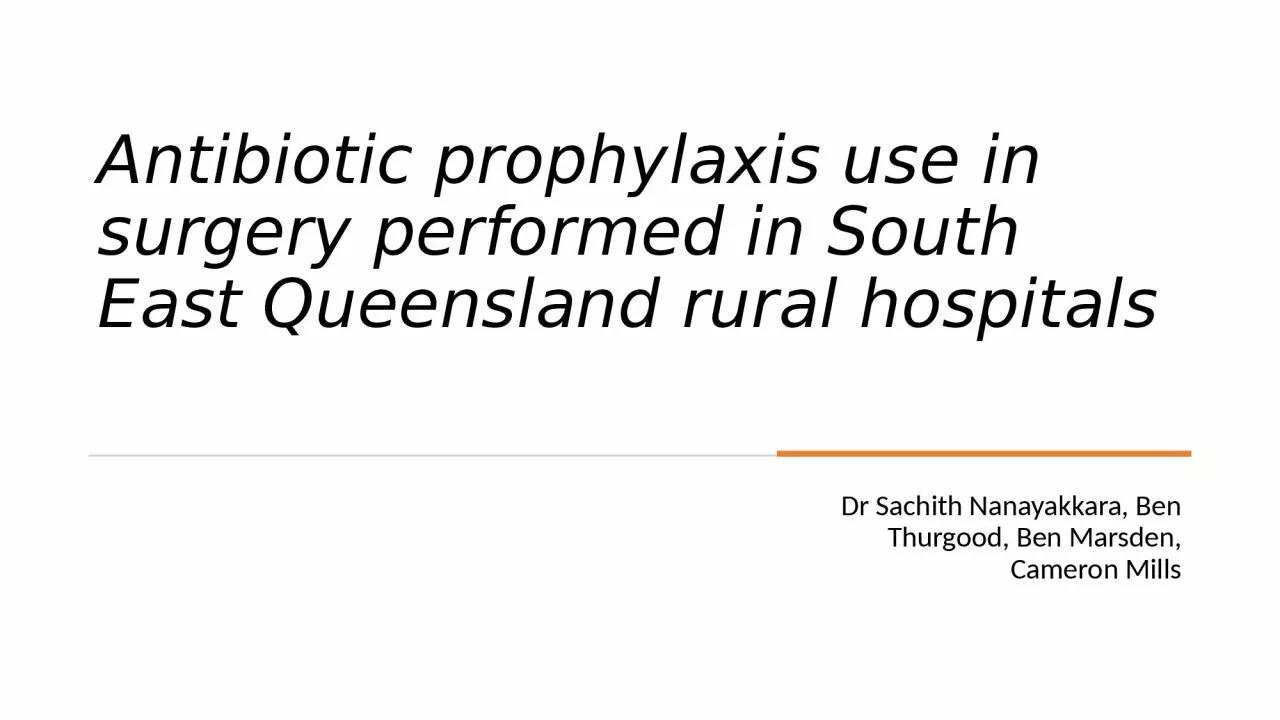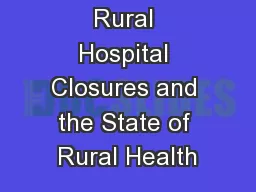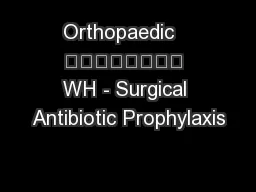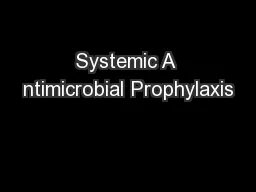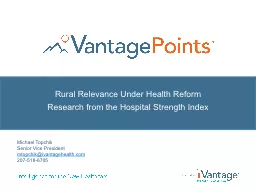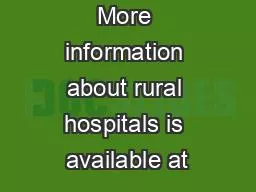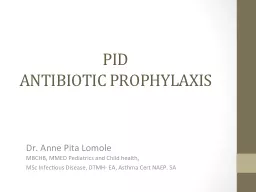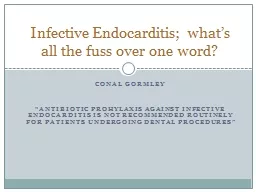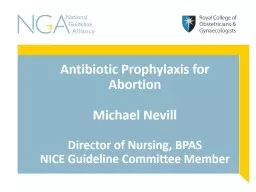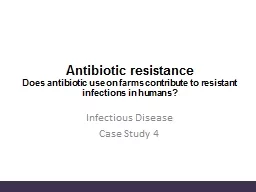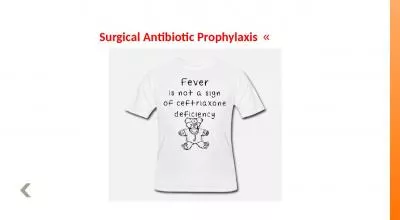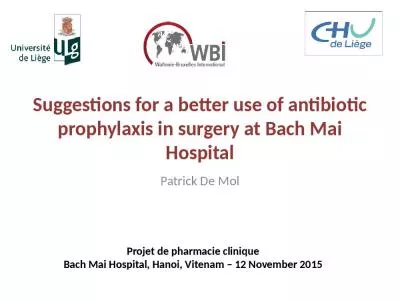PPT-Antibiotic prophylaxis use in surgery performed in South East Queensland rural hospitals
Author : badra | Published Date : 2023-11-16
Dr Sachith Nanayakkara Ben Thurgood Ben Marsden Cameron Mills Background Prophylactic use of antibiotics is an essential component in most surgeries to prevent surgical
Presentation Embed Code
Download Presentation
Download Presentation The PPT/PDF document "Antibiotic prophylaxis use in surgery pe..." is the property of its rightful owner. Permission is granted to download and print the materials on this website for personal, non-commercial use only, and to display it on your personal computer provided you do not modify the materials and that you retain all copyright notices contained in the materials. By downloading content from our website, you accept the terms of this agreement.
Antibiotic prophylaxis use in surgery performed in South East Queensland rural hospitals: Transcript
Download Rules Of Document
"Antibiotic prophylaxis use in surgery performed in South East Queensland rural hospitals"The content belongs to its owner. You may download and print it for personal use, without modification, and keep all copyright notices. By downloading, you agree to these terms.
Related Documents

